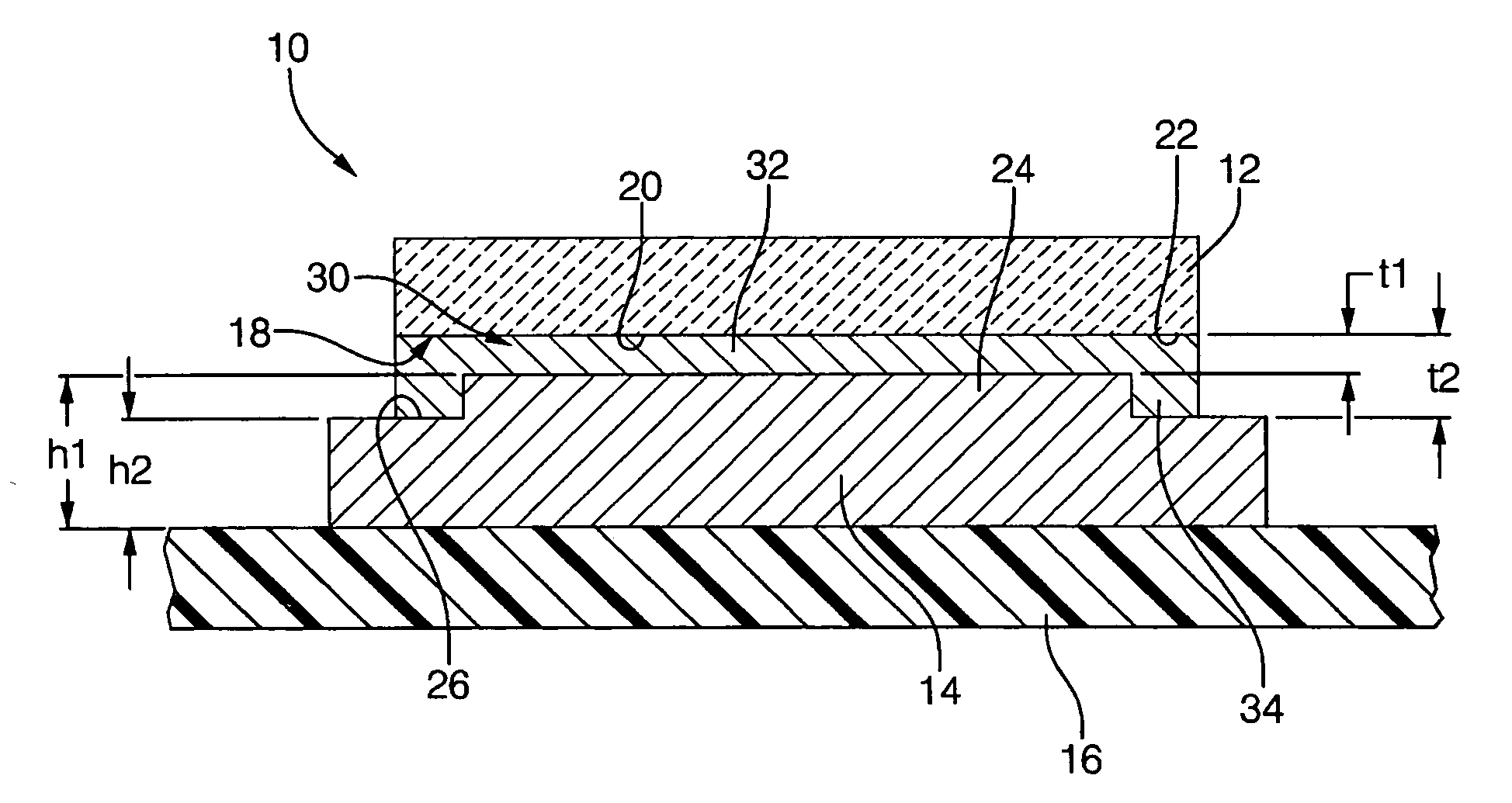Microelectronic assembly having variable thickness solder joint
- Summary
- Abstract
- Description
- Claims
- Application Information
AI Technical Summary
Benefits of technology
Problems solved by technology
Method used
Image
Examples
Embodiment Construction
[0009] In accordance with a preferred embodiment of this invention, referring to FIG. 1, a microelectronic assembly 10 comprises a surface mount component 12 attached to a substrate 14 carried on a printed circuit board 16. By way of a preferred example, component 12 is a power die formed of silicon, such as an FET or IGBT device, and is attached to a substrate that is formed of copper or other metal having a high heat capacity. During operation, heat generated by the component is transferred to and dissipated by the substrate, so that the substrate serves as a heat sink. In addition to serving as a heat sink, substrate 12 may have other uses, such as a bus bar. Optionally, assembly 10 may include an overmolded polymeric body encapsulating the component. While this invention is particularly useful for power die that generate high heat during operation, it may also be suitably employed with low power devices which, because of environmental or other reasons, requires enhanced thermal ...
PUM
 Login to View More
Login to View More Abstract
Description
Claims
Application Information
 Login to View More
Login to View More - R&D
- Intellectual Property
- Life Sciences
- Materials
- Tech Scout
- Unparalleled Data Quality
- Higher Quality Content
- 60% Fewer Hallucinations
Browse by: Latest US Patents, China's latest patents, Technical Efficacy Thesaurus, Application Domain, Technology Topic, Popular Technical Reports.
© 2025 PatSnap. All rights reserved.Legal|Privacy policy|Modern Slavery Act Transparency Statement|Sitemap|About US| Contact US: help@patsnap.com


